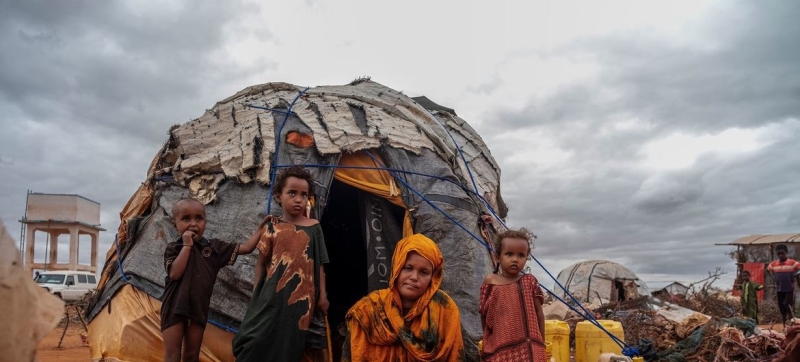- অতিথি পাখির বিচরণ আর দুষ্টুমিতে নান্দনিক হয়ে উঠেছে কুয়াকাটার চর বিজয় |
- Remittance inflow exceeds $632 million in first six days of Dec |
- 18 migrants die as inflatable boat sinks south of Greek island of Crete |
- TIB for polls manifesto vows to curb misuse of powers and religion |
- Khaleda now not fit for travelling: Medical Board |
UN Warns Conflicts Are Devastating Ecosystems Worldwide

Members of a family displaced by drought and conflict rest outside their tent.
From Gaza to Ukraine and beyond, conflicts have caused widespread death and destruction, but they have also severely damaged natural resources, including water systems, farmland, and forests.
These impacts affect livelihoods, fuel displacement, and contribute to ongoing instability. Moreover, they can persist long after the fighting has ended.
In Sierra Leone, for example, “when the guns fell silent in 2002 after a decade of conflict, our primary forests and savannahs also fell silent,” Deputy Foreign Minister Francess Piagie Alghali told the UN Security Council on Thursday.
“We witnessed loss of biodiversity, forced migration of wildlife, and the abandonment of agricultural fields and swamps — all direct consequences of armed conflict,” she added.
Long-Term Implications
Sierra Leone currently holds the rotating Security Council presidency and Ms Alghali presided over a debate on the environmental impact of armed conflict and climate-driven security risks.
The debate comes at a time when more armed conflicts rage across the globe than at any point since the end of the Second World War, affecting two billion people — a quarter of the global population.
“Environmental damage caused by conflicts continues to push people into hunger, disease, and displacement, thereby increasing insecurity,” said Inger Andersen, Executive Director of the UN Environment Programme (UNEP).
Conflicts lead to pollution, waste, and destruction of critical ecosystems, with long-term effects on food security, water resources, the economy, and public health. Meanwhile, climate change can exacerbate tensions and even contribute to conflict over scarce resources such as water or land.
Crop Loss, Contamination, and Flooding
Ms Andersen highlighted examples from Gaza, where two years of war have destroyed 97% of tree crops, 95% of shrubland, and more than 80% of annual crops. “Freshwater and marine ecosystems are polluted by munitions, untreated sewage, and other contaminants,” she said, adding that “over 61 million tonnes of debris must now be cleared carefully to avoid further contamination.”
In Ukraine, the June 2023 destruction of the Kakhova Dam “led to flooding of more than 600 km² of land, resulting in severe loss of natural habitats, plant communities, and species through prolonged inundation,” she noted.
Legal Efforts and International Action
The debate coincided with the International Day for Preventing the Exploitation of the Environment in War and Armed Conflict, highlighting growing recognition of the need for global action.
“Significant efforts are being made to strengthen the international legal framework to protect the environment,” said law professor Charles C. Jalloh, a member of the International Law Commission (ILC).
While no single binding treaty exists, some “soft law” instruments, including the ILC’s 27 draft principles adopted in 2022, aim to protect the environment before, during, and after armed conflict, including in occupied territories.
Strengthening Links and Climate Adaptation
Maranatha Dinat of World Relief highlighted how environmental degradation, climate change, and socio-political instability reinforce one another, undermining peace, security, and sustainable development. She stressed the need to link humanitarian action, climate adaptation, and peacebuilding to boost resilience and social cohesion.
Ms Andersen called for increased international support to help conflict-affected countries rebuild environmental management capacity, enabling sustainable development, economic recovery, and climate adaptation while reducing poverty, hunger, and aid dependency.
She also urged greater investments in climate adaptation and mitigation, noting UNEP’s latest Emissions Gap Report shows the world is struggling to limit global temperature rise to 1.5°C above pre-industrial levels.
“As we head to COP30 in Belém, high ambition is needed both on adaptation and mitigation,” she said. “Every fraction of a degree avoided means lower losses for people and ecosystems — and greater opportunities for peace and prosperity.”

